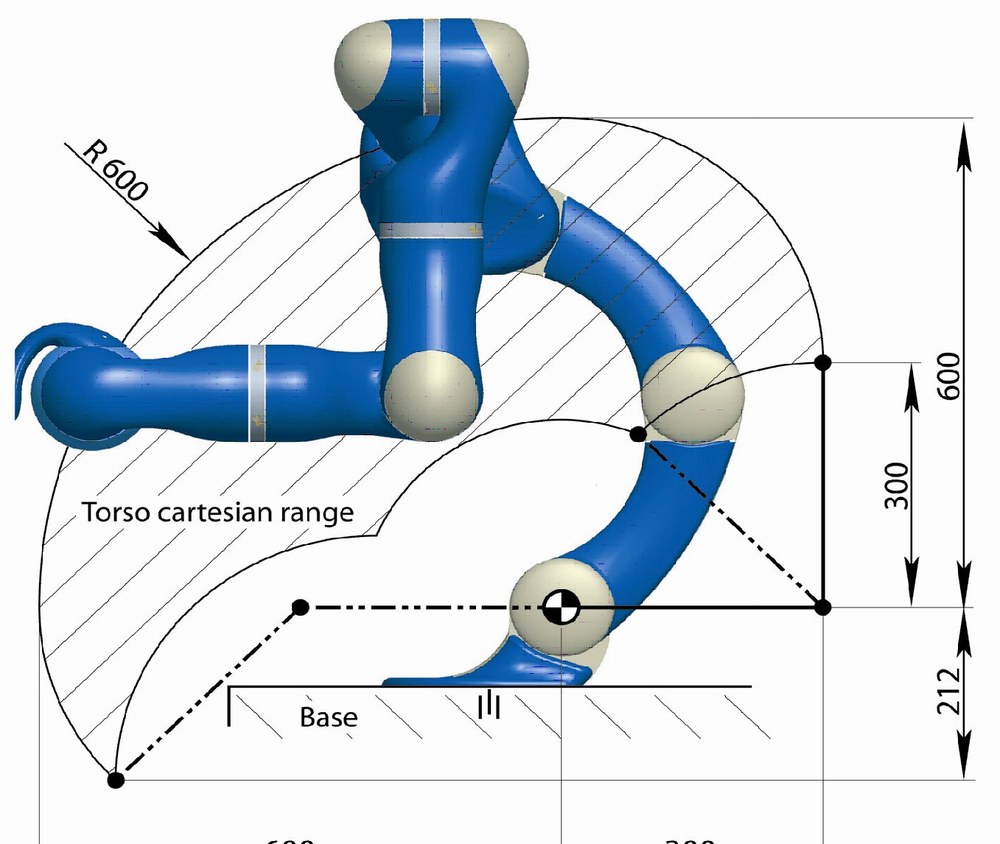Mechatronic Design
The system design uses preliminary works of the institute, namely the DLR Light Weight Robot III (LWR III) and the DLR Hand II. The torso based on LWR technology and the mobile platform enlarge the workspace of the arms and hands. The overall design resembles a human-like shape. The upper body holds a total of 43 controllable degrees of freedom, equipped with link side torque sensors which enable the impressively sensitive manipulation capabilities.
General:
- Workspace: ~ 1,7 m in diameter
- Weight: ~ 200 kg
- Payload: ~ 20 kg
Actuated degrees of freedom:
- torso and neck: 5
- arms: 2 x 7
- hands: 2 x 12
- wheels: 4 x 2 (+ 4 passive DOF)
Sensors:
- 41 x torque (link side)
- 43 x position (motor / link side)
- 2 Prosilica cameras for stereo vision
- 5 Asus Xtion motion sensing devices


Selected Publications
Christoph Borst, Thomas Wimböck, Florian Schmidt, Mathias Fuchs, Bernhard Brunner, Franziska Zacharias, P. R. Giordano, Reiner Konietschke, Wolfgang Sepp, Stefan Fuchs, et al., “Rollin’justin-mobile platform with variable base,” in Proc. of the IEEE International Conference on Robotics and Automation, Kobe, Japan, May 2009, pp. 1597–1598.
Mathias Fuchs, Christoph Borst, Paolo R. Giordano, Andreas Baumann, Erich Kraemer, Jörg Langwald, Robin Gruber, Nikolaus Seitz, Georg Plank, Klaus Kunze, Robert Burger, Florian Schmidt, Thomas Wimböck, Gerd Hirzinger, "Rollin' Justin - Design considerations and realization of a mobile platform for a humanoid upper body", in Proc. of the IEEE International Conference on Robotics and Automation, Kobe, Japan, May 2009
